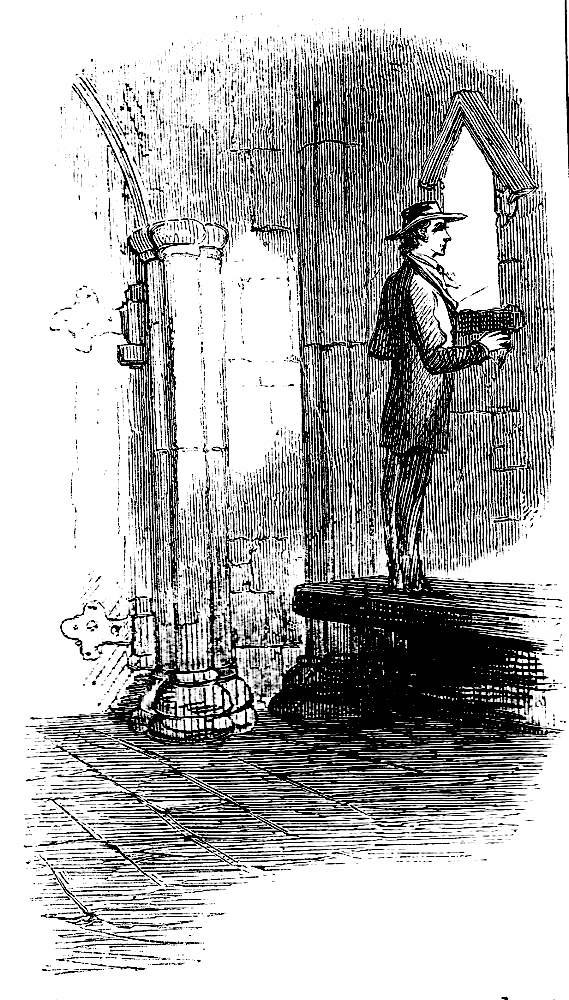Hartright keeping watch in the church
John McLenan
31 December 1859
9.5 cm high by 6 cm wide (3 ¾ by 2 ¼ inches), framed.
Sixth uncaptioned headnote vignette for Collins's The Woman in White: A Novel (31 December 1859), 841.
[Click on the image to enlarge it.]
The illustration prepares the American serial readers for Walter's second interview with Anne Catherick, beside Mrs. Fairlie's grave, not far from Limmeridge House. Hartright has stationed himself so that, unseen, he can conduct surviellance of Mrs. Fairlie's grave, whose marble cross has been recently cleaned.
Scanned image and text by Philip V. Allingham.
